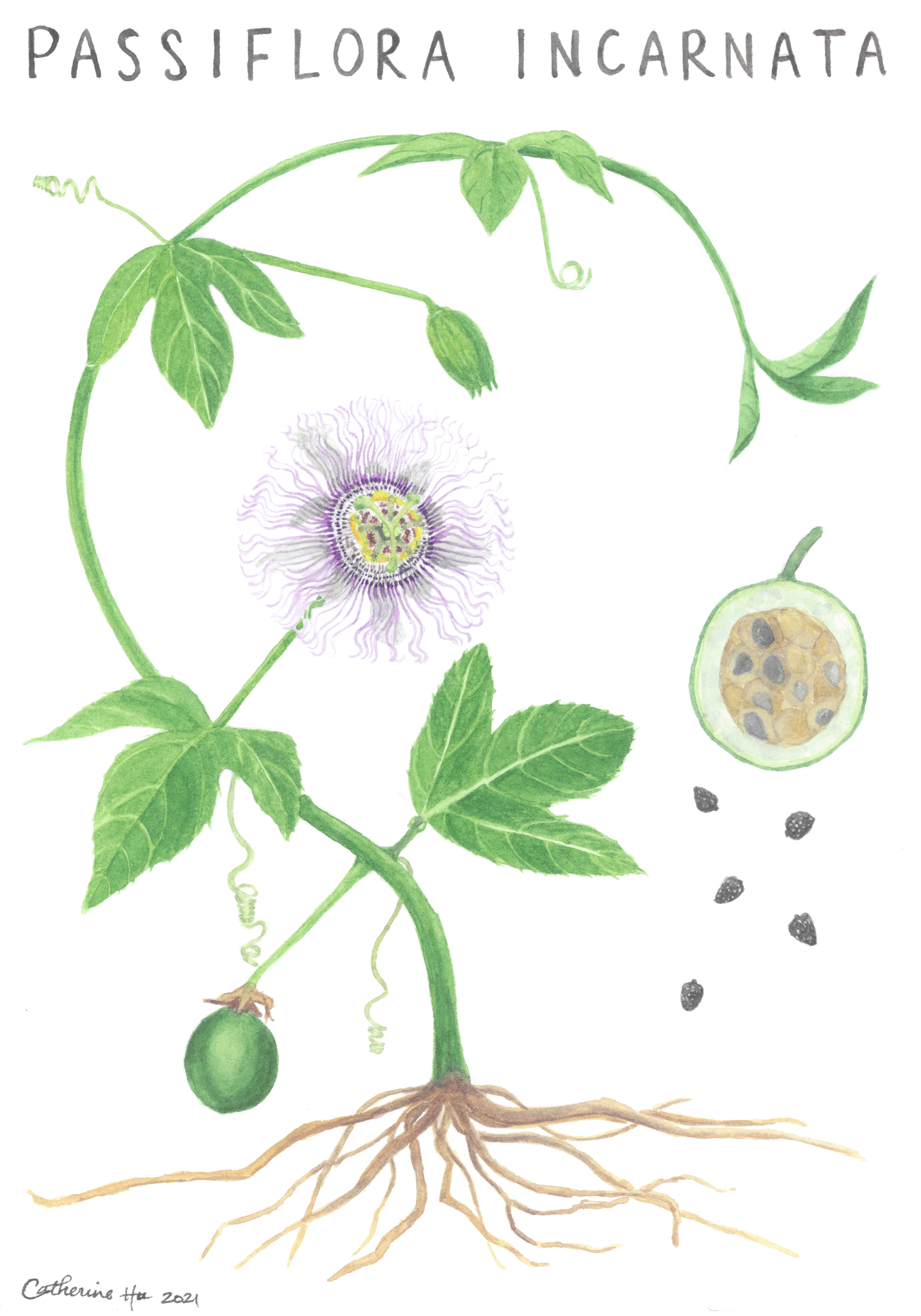Botanical Illustrations of Native Midwest Plants
Realistic watercolor paintings of plants native to the Midwest.
Written & Illustrated by Catherine Hu
A native plant or animal is one that naturally occurs in a region without human introduction and has evolved with the area’s climate and geology over a long period of time. Native plants are especially important because they are at the base of the food chain, supporting native insects, many of which do not prefer or cannot use non-native plants as food or shelter. These insects in turn support small mammals, birds, and then larger animals. Without native plant diversity, other creatures cannot thrive.
Many of these native plants and animals are struggling now due to humans’ ability to transport living things quickly across the globe. Most landscaping around houses and businesses include non-native ornamental plants, some of which have become invasive, escaping into natural areas and crowding out the natives. At best, they have no ecological value in their current location. I don’t believe human preference should be more important than ecological health, and I hope my artwork inspires people to appreciate all the complexity and beauty in nature, even when there’s no obvious benefit to humans and perhaps even start to rethink what they are planting in their outdoor spaces.
Michigan lily, Lilium michiganense, is a true lily found in higher quality natural areas. It blooms around late June and early July. Hummingbirds and butterflies often visit these flowers.
Delphinium tricorne, dwarf larkspur, is a beautiful spring ephemeral. This painting shows the variation in leaf shape and flower color. Its fruits are three-parted and point upward, earning the name “tricorne,” meaning three-horned.
Silene regia, royal catchfly. The name catchfly comes from the sticky hairs on the stem and tubular part of the flower where insects often get stuck. It blooms mid-summer and is one of a few red native flowers.
Adiantum pedatum, maidenhair fern, is a lovely delicate woodland plant. One of my favorites! It can form large colonies over time and is often found in moist and shady spots.
Passiflora incarnata, purple passionflower, is a wild looking plant native to the lower midwest and southeast. It produces an edible fruit and is usually pollinated by carpenter bees.
Asclepias tuberosa, butterfly milkweed, has bright orange, sometimes red flowers. Unlike other milkweeds (Asclepias spp.), it does not contain milky sap. This plant supports many organisms including bees, wasps, moths, butterflies, and hummingbirds.
Polygonatum biflorum, Smooth Solomon's Seal, is a beautiful plant that arches gracefully with flowers dangling along its stem. This painting shows the stages of its life cycle: poking out of the ground in spring, flower buds, flowers in bloom, unripe fruit (green), ripe fruit (blue), full grown plant, and roots. The scars on its rhizomes are said to look like King Solomon's Hebrew seal, which is where it gets its name.
Catherine Hu is an ecologist and scientific illustrator. You can find more of her work, including art prints and apparel, through her website sedgeshaveedgesart.com and on Instagram @sedgeshaveedges.art.








